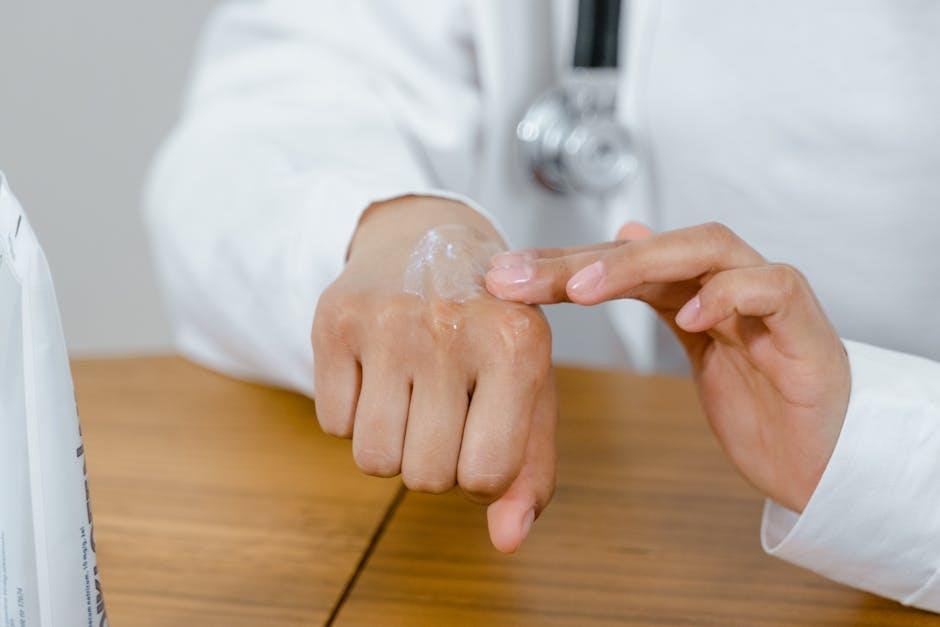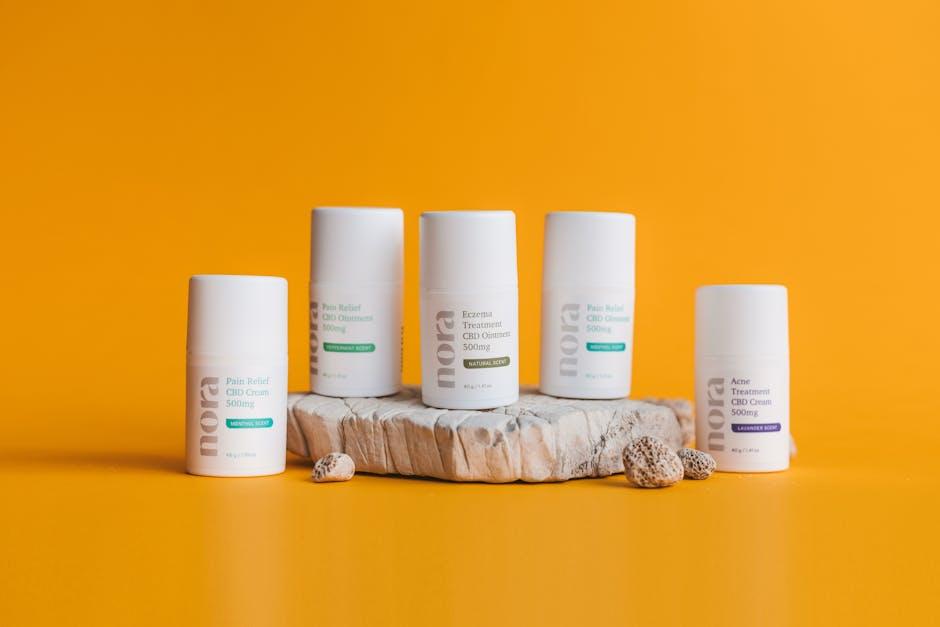Eczema, with its persistent itchiness and inflamed patches, can feel like an unrelenting visitor in one’s life. While conventional treatments often focus on symptom management, a growing number of individuals are turning to holistic approaches that address the root causes of this challenging condition. Among these, the GAPS (Gut and Psychology Syndrome) protocol offers a fascinating natural pathway—emphasizing the healing power of the gut to soothe skin flare-ups and restore balance from within. In this article, we explore how embracing the GAPS principles may open doors to alleviating eczema, nurturing both the body’s intricate ecosystem and its visible expressions.
Table of Contents
- Understanding Eczema Through the GAPS Lens
- The Role of Gut Health in Skin Healing
- Harnessing GAPS Nutritional Protocol for Inflammation Reduction
- Incorporating Natural Remedies and Lifestyle Changes
- Monitoring Progress and Adjusting Your Healing Journey
- Q&A
- Concluding Remarks

Understanding Eczema Through the GAPS Lens
From the perspective of the GAPS (Gut and Psychology Syndrome) approach, eczema is viewed not merely as a superficial skin condition but as a reflection of underlying gut imbalances. The GAPS philosophy emphasizes that the health of the digestive system directly influences the state of your skin. When the intestinal lining is compromised, nutrient absorption falters and toxins may seep into the bloodstream, triggering immune responses that manifest as eczema. This connection suggests that healing the gut through targeted nutrition and natural therapies can profoundly alleviate eczema symptoms and promote lasting skin health.
Key elements of the GAPS approach to understanding eczema include:
- Restoring gut flora balance: Replenishing beneficial bacteria to improve digestion and immunity.
- Eliminating inflammatory triggers: Identifying foods and substances that provoke immune reactions.
- Supporting liver detoxification: Helping the body expel toxins that aggravate skin issues.
- Repairing gut lining integrity: Using nutrient-rich broths and fermented foods to seal intestinal permeability.
| Symptom | Possible Gut Cause | GAPS Focus |
|---|---|---|
| Dry, itchy patches | Imbalanced microbiome | Probiotic therapy |
| Redness and inflammation | Leaky gut syndrome | Gut repair foods |
| Recurring flare-ups | Food sensitivities | Elimination diet |
The Role of Gut Health in Skin Healing
Our skin is often called the mirror of our internal health, and nowhere is this truer than with the gut-skin connection. When the gut lining is compromised, it allows toxins and undigested particles to enter the bloodstream, which can trigger inflammation and immune responses manifesting as skin conditions like eczema. By restoring gut integrity through the GAPS protocol, you support a balanced microbiome that produces essential nutrients and regulates the immune system—both vital for skin repair and resilience.
Incorporating nutrient-dense foods and fermented probiotics typical of the GAPS diet helps replenish beneficial bacteria, reduce harmful pathogens, and soothe inflammation from within. Consider these key gut–skin healing elements:
- Bone Broth: Rich in collagen and amino acids that repair intestinal lining and promote skin regeneration.
- Fermented Vegetables: Deliver probiotics that enhance microbial diversity and outcompete harmful bacteria.
- Healthy Fats: Omega-3 fatty acids from sources like fish and walnuts help reduce systemic inflammation impacting the skin.
- Gelatin and Collagen: Support tissue building both inside the gut and on the skin’s surface.
| Gut Health Factor | Skin Impact | GAPS Support |
|---|---|---|
| Leaky Gut | Inflammation, outbreaks | Bone broth, gelatin |
| Microbial Imbalance | Itchy, dry skin | Fermented foods, probiotics |
| Chronic Inflammation | Redness, sensitivity | Omega-3 rich foods, anti-inflammatory herbs |
Harnessing GAPS Nutritional Protocol for Inflammation Reduction
Deep within the GAPS protocol lies a powerful ally against chronic inflammation—restoration of gut integrity. By focusing on nutrient-dense broths, fermented foods, and carefully selected fats, this approach soothes the gut lining, dramatically reducing the passage of inflammatory triggers into the bloodstream. Prioritizing collagen-rich bone broths, raw fermented vegetables, and naturally fermented dairy builds a fortified digestive environment. This, in turn, diminishes systemic inflammation—one of the key drivers behind eczema flare-ups.
Incorporating staple foods into daily meals is essential for sustained relief. Consider this quick reference to balance inflammation-fighting nutrients:
| Food Category | Key Benefit | Suggested Intake |
|---|---|---|
| Bone Broth | Supports gut lining repair | 1–2 cups daily |
| Fermented Veggies | Enhances healthy gut flora | 1/4 cup daily |
| Healthy Fats (e.g., ghee, olive oil) | Reduces oxidative damage | 2–3 tbsp daily |
Consistency with these nutrient choices equips the body to quell inflammatory responses naturally, allowing the skin’s innate healing abilities to shine through without harsh chemicals or pharmaceuticals.
Incorporating Natural Remedies and Lifestyle Changes
Embracing natural remedies alongside dietary approaches can significantly enhance your journey toward soothing eczema flare-ups. Integrating topical applications such as calendula ointment, colloidal oatmeal baths, and cold-pressed coconut oil helps to restore the skin’s barrier and reduce inflammation. Equally important is the mindful use of gentle, fragrance-free skincare products to avoid further irritation. These remedies work harmoniously with the Gut and Psychology Syndrome (GAPS) diet, complementing internal healing by nurturing the skin directly.
Moreover, lifestyle shifts are vital for sustained eczema improvement. Simple practices like stress management through meditation or yoga, consistent sleep routines, and avoiding environmental triggers can make a tangible difference. Consider incorporating the following daily habits to support both gut health and skin vitality:
- Hydration: Drinking ample water to maintain skin moisture.
- Sun exposure: Moderate, safe sunlight for vitamin D synthesis.
- Textile choices: Wearing soft, breathable fabrics like cotton.
Monitoring Progress and Adjusting Your Healing Journey
Tracking improvements and setbacks is crucial on your journey to healing eczema with the GAPS protocol. By maintaining a daily journal, you can record dietary changes, skin reactions, and emotional well-being. This personalized log not only highlights patterns but also empowers you to make informed decisions. Consider noting:
- Foods introduced or eliminated
- Severity and location of eczema flare-ups
- Sleep quality and energy levels
- Stress triggers and relaxation techniques used
Regular check-ins—weekly or biweekly—help calibrate your approach. Some foods may surprisingly trigger irritation even if generally considered healthy in the GAPS diet. If progress plateaus or symptoms worsen, it may be beneficial to adjust supplement dosages, tweak probiotic sources, or consult a healthcare professional versed in GAPS therapy.
| Action | What to Observe | Adjustment Tips |
|---|---|---|
| Eliminate dairy | Reduced redness, itching | Try fermented dairy if tolerated |
| Increase bone broth | Improved skin texture | Boost collagen intake with more broth |
| Manage stress | Fewer flare-ups | Incorporate meditation or gentle yoga |
Q&A
Q&A: Healing Eczema Naturally with GAPS
Q1: What is GAPS, and how does it relate to healing eczema?
A1: GAPS stands for Gut and Psychology Syndrome, a nutritional protocol developed by Dr. Natasha Campbell-McBride. It focuses on healing the gut lining through diet and lifestyle changes. Since eczema is often linked to gut inflammation and food sensitivities, the GAPS protocol aims to address the root cause by restoring gut health, which can lead to natural eczema improvement.
Q2: How does gut health influence eczema symptoms?
A2: The gut is central to the immune system, and when the gut lining is compromised (a condition sometimes called “leaky gut”), it can allow toxins and undigested food particles into the bloodstream. This can trigger inflammation and immune responses that manifest as eczema symptoms on the skin. By healing the gut, GAPS reduces this inflammation, potentially calming eczema flare-ups.
Q3: What are some key elements of the GAPS diet that help with eczema?
A3: The GAPS diet emphasizes nutrient-dense, unprocessed foods that support gut healing. This includes homemade bone broths, fermented foods like sauerkraut and yogurt, healthy fats, and avoidance of foods that irritate the gut such as grains, refined sugars, and processed foods. These choices create an anti-inflammatory environment that may alleviate eczema symptoms.
Q4: Can natural supplements or remedies be used alongside GAPS for eczema?
A4: Yes, natural supplements such as probiotics, omega-3 fatty acids, and herbal anti-inflammatories can complement the GAPS diet by further supporting gut flora balance and reducing skin inflammation. However, it’s important to consult a healthcare provider before adding supplements, especially for children or those with severe eczema.
Q5: How long does it typically take to see improvements in eczema when following the GAPS protocol?
A5: Healing timelines vary widely depending on the individual’s condition and adherence to the protocol. Some people notice improvement within weeks, while others may take several months of consistent diet and lifestyle changes. Patience and persistence are key, as gut healing is a gradual process.
Q6: Are there any risks or challenges associated with using the GAPS diet for eczema?
A6: The GAPS diet is quite restrictive, especially at the beginning, which can make it challenging to follow. Nutritional deficiencies may occur if the diet isn’t balanced properly, so careful planning or professional guidance is recommended. Additionally, sudden dietary changes can sometimes trigger temporary detox reactions or skin flare-ups.
Q7: What lifestyle practices support the healing of eczema alongside the GAPS diet?
A7: Beyond diet, practices such as stress management, regular gentle exercise, adequate sleep, and skin care with natural, fragrance-free products can support eczema healing. Since eczema is multifactorial, addressing overall well-being enhances the effectiveness of gut-focused interventions like GAPS.
Q8: Is the GAPS protocol suitable for everyone with eczema?
A8: While many have found success with GAPS, it may not be suitable for everyone, especially those with certain medical conditions or specific nutrient needs. Consulting with a healthcare professional experienced in GAPS or functional medicine is advisable before starting the protocol to ensure it is safe and tailored to individual needs.
Concluding Remarks
In the journey toward soothing eczema naturally, the GAPS approach invites us to look deeper—beyond surface symptoms to the intricate balance of gut health and overall wellness. While every individual’s path to healing is unique, embracing the principles of GAPS can open doors to renewed comfort and confidence in your skin. As you explore these natural remedies, remember that patience and listening to your body are key companions on the road to restoration. With mindful practice and gentle care, the dream of calm, clear skin may no longer seem so distant.

